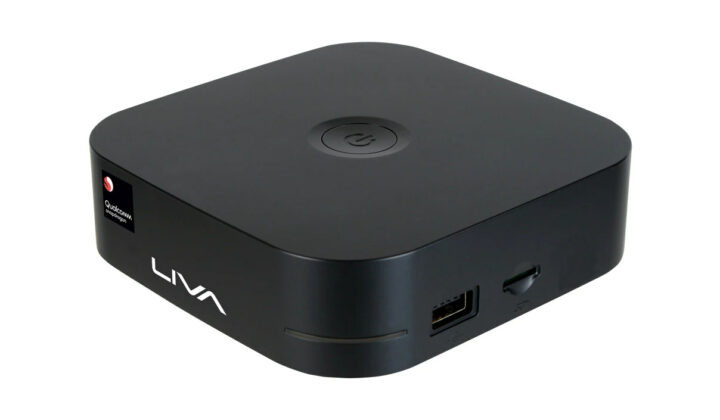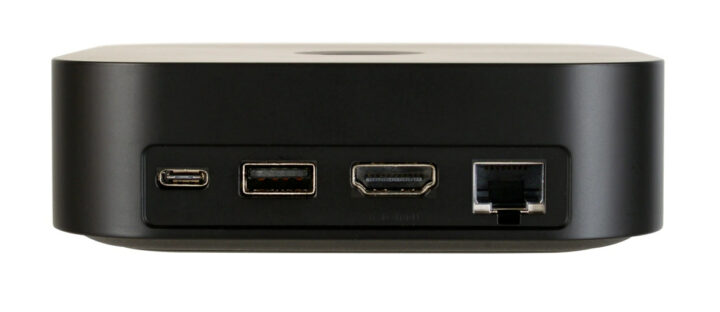The “Snapdragon QC710 Developer Kit” for Windows 10 on Arm app development was unveiled last May, and it’s now available for $219 on Microsoft Store as the “ECS LIVA Mini Box QC710 Desktop”. The developer kit can also be purchased at a discount for $197.10 by students, parents(!), teachers, and members of the military. I suppose this applies only to the US military and showing your Taliban membership card may not work.
The developer kit looks like a standard mini PC and features a Qualcomm Snapdragon 7c Compute Platform (SC7180), 4GB RAM, 64GB eMMC flash, HDMI output, 10/100M Ethernet and WiFi 5, and several USB ports.
 ECS LIVA Mini Box QC710 Desktop specifications:
ECS LIVA Mini Box QC710 Desktop specifications:
- SoC – Qualcomm Snapdragon 7c Compute Platform (SC7180) with octa-core Qualcomm Kryo 468 (2x Cortex-A76, 6x Cortex-A55) CPU @ up to 2.4 GHz, Adreno 618 GPU
- System Memory – 4GB
- Storage – 64GB eMMC flash, MicroSD card socket
- Video & audio output – 1x HDMI port (Not 4K capable based on the Snapdragon 7c processor’s specs)
- Networking
- 10/100M Ethernet
- WiFi 5 and Bluetooth
- USB
- 1x USB 3.2 Gen1 (5 Gbps) Type-A port
- 1x USB 2.0 Type-A port
- 1x USB Type-C port with support for USB PD
- Power Supply – USB PD
- Dimensions – 119.13 x 116.58 x 35.05 mm
- Weight – 230 grams
 The mini PC ships with Windows 10 Home, 64-bit, but XDA developer says it can also be upgraded to Windows 11. It’s not a native Arm development platform, meaning it’s not designed to build apps (as too slow), but instead, the development kit would typically be used to test apps developed and built on a more powerful (x86) machine.
The mini PC ships with Windows 10 Home, 64-bit, but XDA developer says it can also be upgraded to Windows 11. It’s not a native Arm development platform, meaning it’s not designed to build apps (as too slow), but instead, the development kit would typically be used to test apps developed and built on a more powerful (x86) machine.
Microsoft stresses this is a product meant for developers, not consumers, so you can’t get a refund if you don’t like the color or change your mind, and I’d assume customer support may not be available unless the devkit does not work at all. I could not find information about the warranty.
Nevertheless, if you are interested in Windows on Arm app development, the ~$200 ECS LIVA Mini Box QC710 Desktop is probably the cheapest Windows Arm machine you can get your hands on.

Jean-Luc started CNX Software in 2010 as a part-time endeavor, before quitting his job as a software engineering manager, and starting to write daily news, and reviews full time later in 2011.
Support CNX Software! Donate via cryptocurrencies, become a Patron on Patreon, or purchase goods on Amazon or Aliexpress




